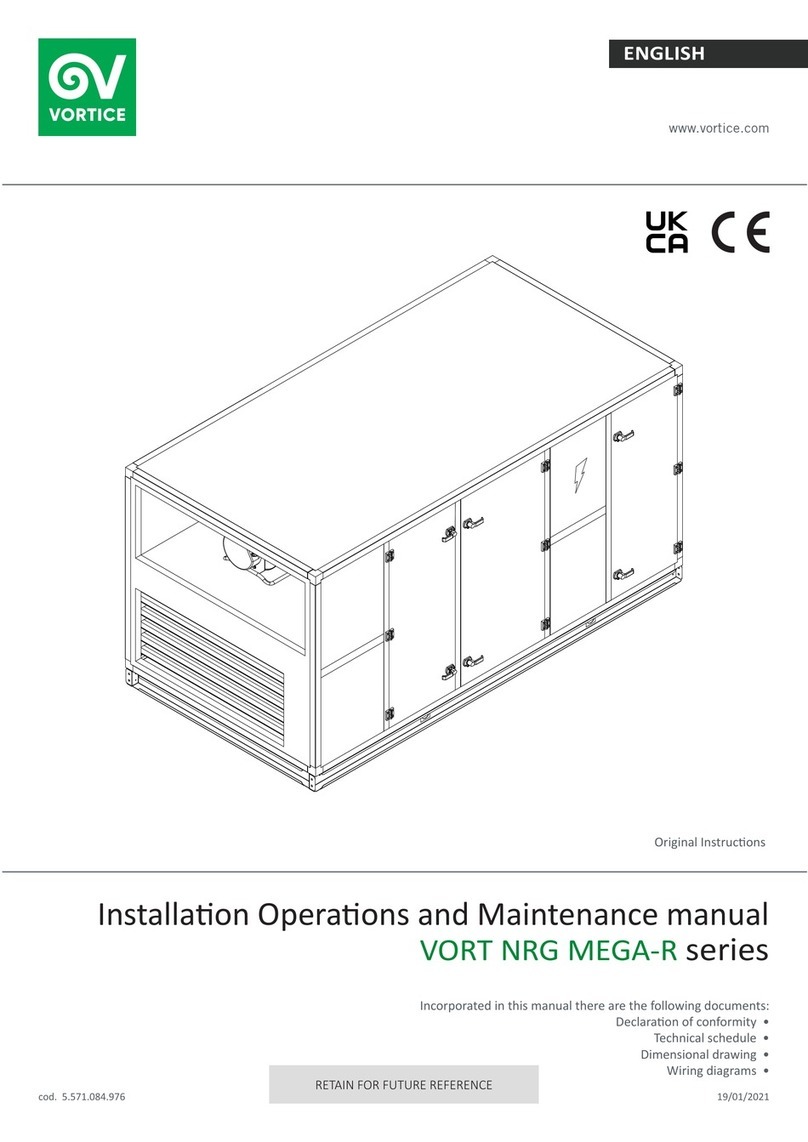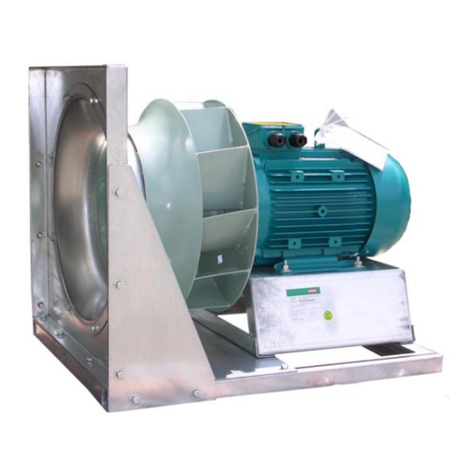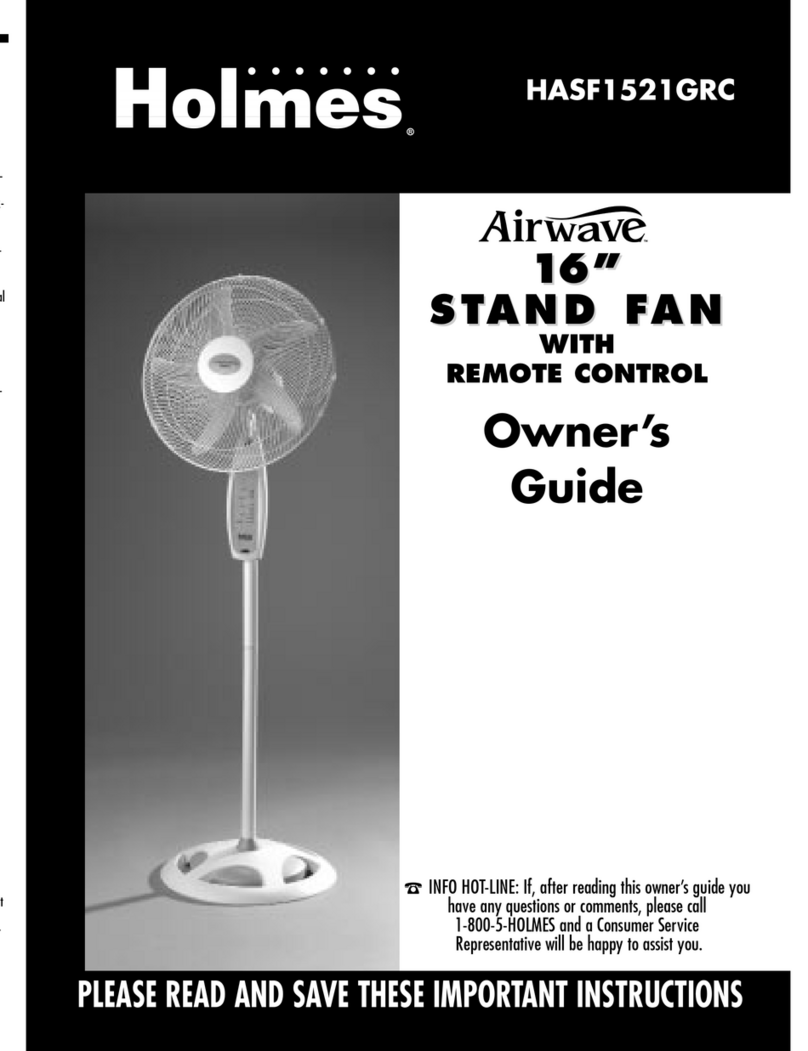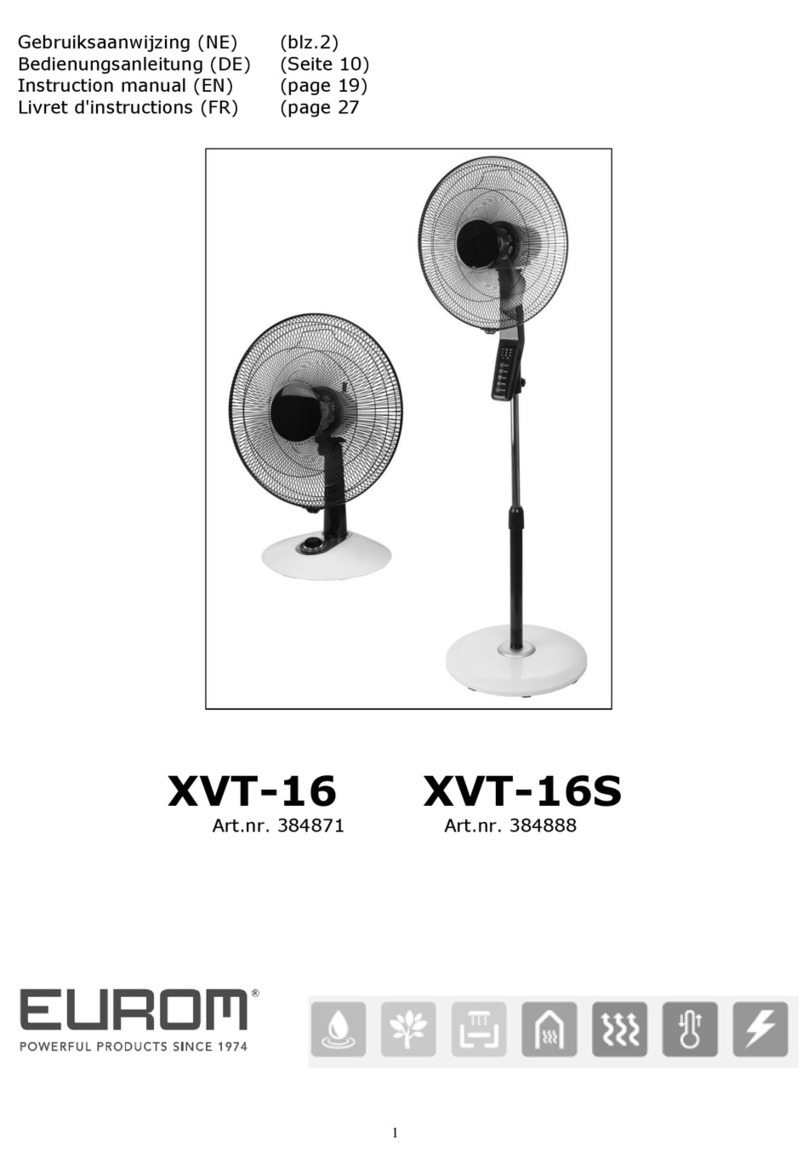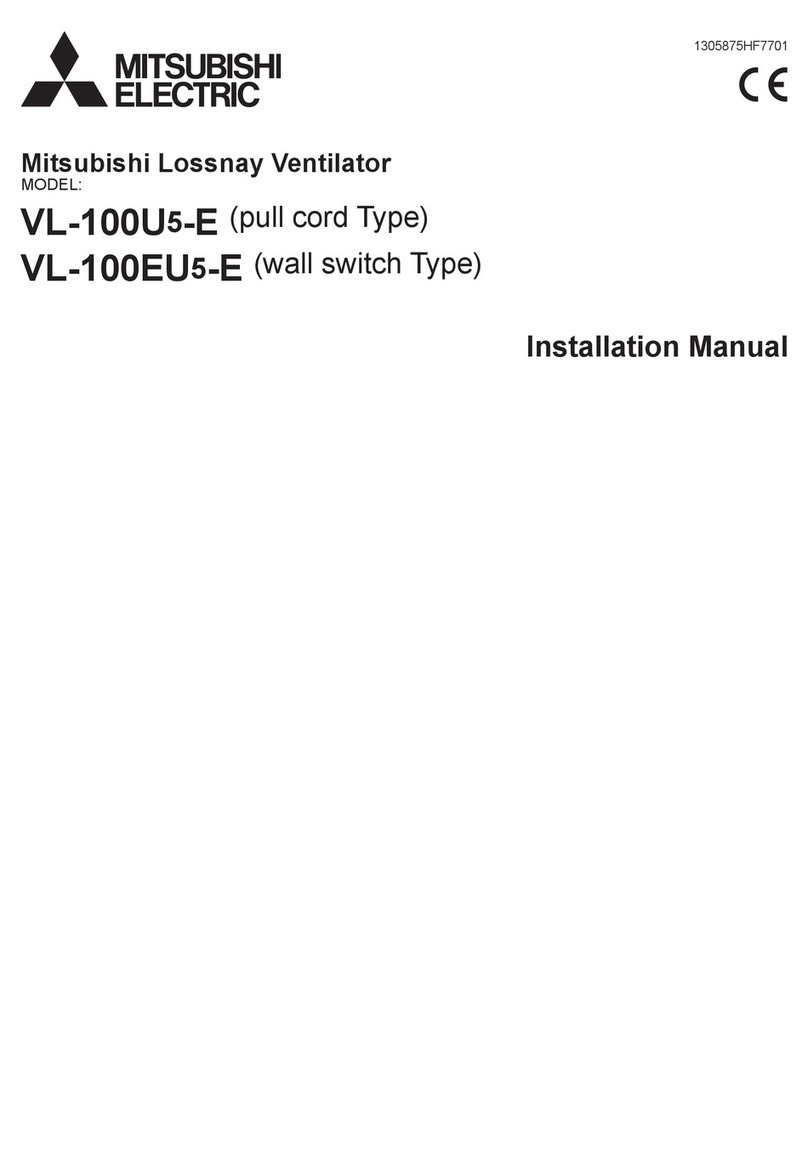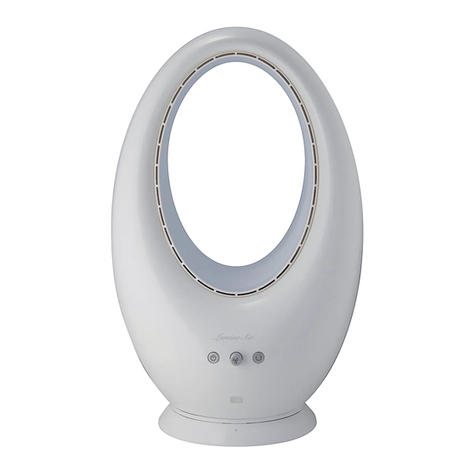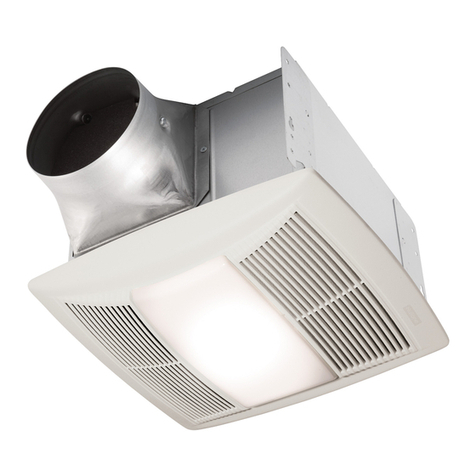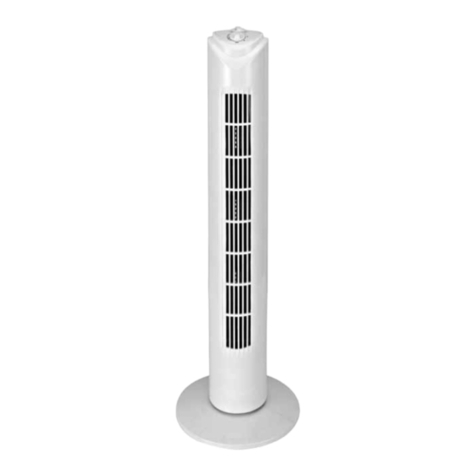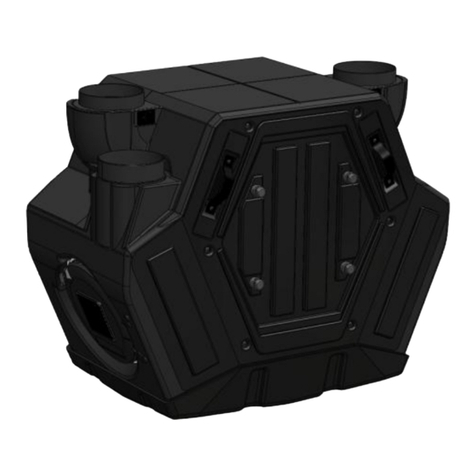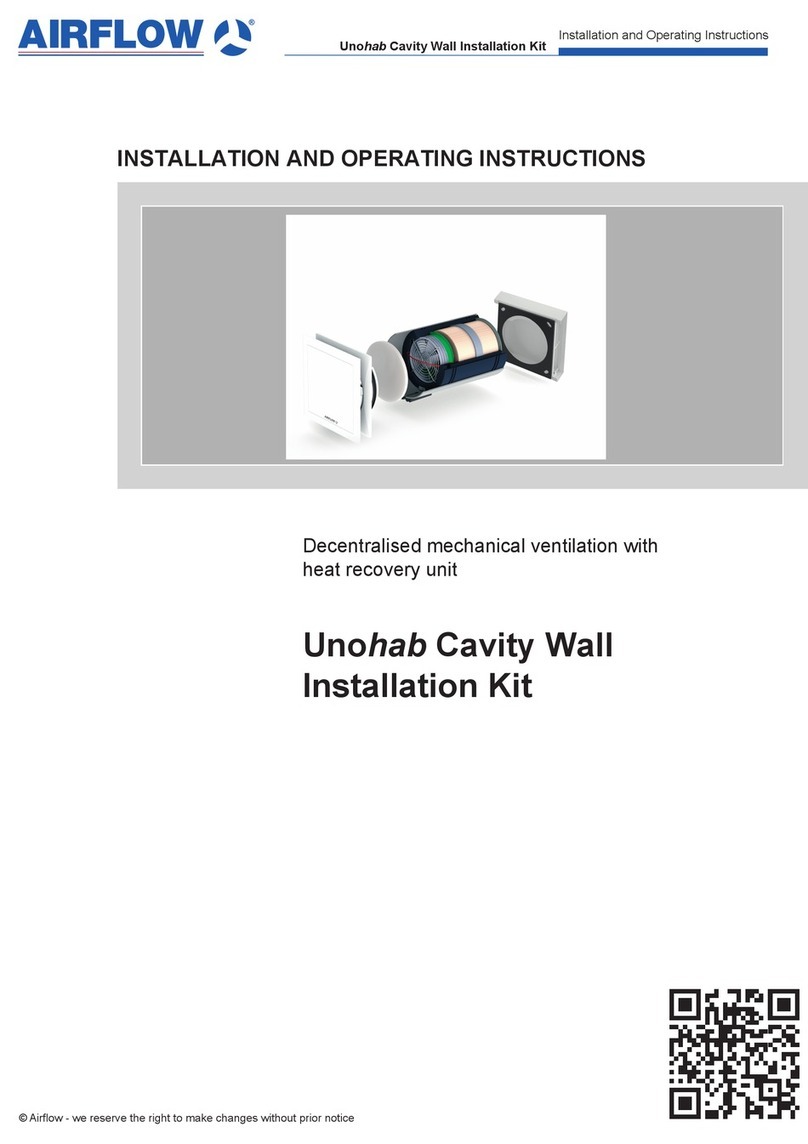Air-On pNeuton A User manual

pNeuton®
Transport Ventilator
Model A
Operators Manual
97011
CD-A-005 Rev J
Released 1 Feb 2019

The pNeuton®Ventilator is under US patent protection.
(Patent # 6,591,835)
pNeuton is a Registered Trademark of the Airon
Corporation
Copyright © 2011 by Airon Corporation
Manufactured by:
Airon®Corporation
751 North Drive
Unit6
Melbourne, Florida 32934
USA
Tel: 888-448-1238 (toll free USA & Canada
+1-321-821-9433
Fax: +1-321-821-9443
www.AironUSA.com

pNeuton Ventilator I
Table of Contents
Section 1. General Description ............................ 1-1
Section 2. Warnings, Cautions, Notes ................. 2-1
Warnings ......................................................... 2-1
Cautions .......................................................... 2-3
Notes .............................................................. 2-4
Indications for Use .......................................... 2-6
Contraindications ............................................ 2-6
Medical Symbol Key …………………………… 2-7
Section 3. Controls and Patient Safety Systems .. 3-1
Front Panel ...................................................... 3-1
Rear Panel ....................................................... 3-3
Unique Device Identifier ……………………….. 3-5
Internal Patient Safety Systems ....................... 3-6
Section 4. Operating Instructions ......................... 4-1
Ventilator Set-up .............................................. 4-1
Operational Verification .................................... 4-2
Patient Ventilation ............................................ 4-3
Interrelationship of Volume and Rate Controls . 4-4
Oxygen Control ............................................... 4-5
Hypobaric Operation ......................................... 4-5
Disconnect Alarm ……………………………….. 4-5
Section 5. Patient Circuit ...................................... 5-1
Adult / Pediatric Circuit .................................... 5-1
Ventilator Connection ...................................... 5-2
Single-Use only Devices/Accessories ……….. 5-3
Section 6. Accessories …………………………….. 6-1
Section 7. Theory of Operation ............................. 7-1
Pneumatic System Diagram ............................ 7-1
Pneumatic System Description ......................... 7-2
Tidal Volume and Rate Control System ........... 7-3

pNeuton Ventilator II
Mandatory Breath Pressure Control System .... 7-5
CPAP Demand Flow Breathing System ........... 7-5
Oxygen Delivery System .................................. 7-6
MRI Compatibility .............................................. 7-9
Disconnect Alarm ……………………………….. 7-10
Low Gas Supply Alarm …………………………. 7-11
Section 8. Troubleshooting .....................................8-1
Section 9. Cleaning and Maintenance ................. 9-1
Cleaning the Ventilator .................................... 9-1
Cleaning / Disinfecting the Patient Circuit ....... 9-1
Routine Maintenance ...................................... 9-1
Factory Preventive Maintenance..................... 9-1
Section 10. Specifications ...................................... 10-1
General Description ......................................... 10-1
Ventilator System Performance ....................... 10-1
Alarm System …………………………………… 10-2
Environmental and Physical Characteristics .... 10-3
Power Sources ................................................. 10-3
Section 11. Limited Warranty ................................. 11-1
Section 12. Index ................................................... 12-1

pNeuton Ventilator 1 - 1
pNeuton Transport Ventilator
Section 1: General Description
pNeuton (pronounced "new-ton") is a small, lightweight
transport ventilator designed for use on patients from
pediatric to adult in size, 23 kg or greater. It is a time
cycled, flow limited ventilator providing Intermittent
Mandatory Ventilation (IMV). In this mode of ventilation,
an adjustable respiratory rate and tidal volume are
delivered to the patient. The patient is allowed to breath
spontaneously between the mandatory breaths with
minimal work of breathing. A built-in PEEP / CPAP system
can be set to provide expiratory positive pressure. The
delivered oxygen is adjustable to 65% or 100%, with
oxygen as the driving source gas.
pNeuton is a pneumatic ventilator. Electrical power is not
required for patient ventilation. pNeuton has been
specifically designed for patient support during transport
and non-critical care unit mechanical ventilation. It may be
used during intra and inter-hospital transport, in aircraft, on
ambulances, in emergency rooms, MRI and other
radiology suites.

pNeuton Ventilator 1 - 2

pNeuton Ventilator 2 - 1
Section 2: Warnings, Cautions, Notes
The pNeuton Ventilator is intended for use by properly
trained personnel under the direct supervision of licensed
medical Physician or Practitioner only. Personnel must
become thoroughly familiar with this Operators Manual
prior to using the pNeuton Ventilator on a patient.
As used in this manual, the following terms mean:
Warning: Indicates the possibility for injury to the
patient or the operator
Caution: Indicates the possibility of damage to the
device
Note: Places emphasis on an operating
characteristic
Warnings
This manual serves as a reference. The instructions in this
manual are not intended to supersede the physician’s
instructions regarding the use of the pNeuton Ventilator.
The operator should read and understand this entire
manual before using the pNeuton Ventilator.
DO NOT use the pNeuton Ventilator in conjunction
with anesthetics or in contaminated (hazardous, explosive)
atmospheres. Only compressed oxygen may be used.
DO NOT use conductive (anti-static) patient breathing
circuits. The only approved patient circuits for use with
pNeuton Ventilator are the Airon circuits listed in Section 5
of this manual. Any other patient circuit should NOT be
used and may lead to patient harm.

pNeuton Ventilator 2 - 2
The Operational Verification tests as described in this
manual (Section 4) must be performed prior to connecting
a patient to the ventilator. If the ventilator fails any of the
tests it must be removed from clinical use. DO NOT return
the unit to clinical use until all repairs has been completed
by an Airon approved repair facility and all operational
verification tests are acceptable.
The pNeuton Ventilator has been designed for use on
adult and pediatric patients. The pNeuton cannot deliver
operator adjusted tidal volumes less than 360 ml. DO NOT
use the pNeuton Ventilator on neonatal or infant
patients, or small children.
To protect the patient from high airway pressures, insure
that the Peak Pressure control is adjusted appropriately.
Due to the design of the ventilator (see Section 7 -
Theory of Operation) the Tidal Volume and Respiratory
Rate controls are interdependent. The Tidal Volume
control is a calibrated control. The Respiratory Rate
control is calibrated for a set tidal volume between 500 ml
and 900 ml. Lower tidal volumes will have higher rates,
higher tidal volume will have lower rates. Once the tidal
volume is set, it will not vary as the respiratory rate is
changed. However, if the Tidal Volume control setting
is changed the respiratory rate may change. Always
recheck the patient's mandatory breath rate after changing
the tidal volume to assure the patient is receiving the
proper respiratory rate.
The pNeuton Ventilator is not intended for use under
hyperbaric pressure conditions. If used in these conditions
tidal volume delivery will significantly decrease. Careful
patient monitoring of tidal volume with a hyperbaric
compatible external spirometer is mandatory.

pNeuton Ventilator 2 - 3
The pNeuton Ventilator is MRI Conditional up to
3 T (see Notes section below). While tests show
that the ventilator functions at the bore of the MRI
unit, Airon Corporation does not recommend that the
ventilator be clinically used at or within the bore of MRI
scanners. A minimum proximity of 12 inches (0.3 meter)
from the bore should be used. In addition, safe MRI
practice calls for all devices used in the proximity of a MRI
scanner, including pNeuton, be anchored to prevent
inadvertent movement.
The Low Gas Supply Alarm will occur if the driving gas
supply drops below safe levels (30 psi, 200 kPa). The
alarm activates as long as driving gas is available or until
supply pressure returns to normal. The alarm will only
activate for a very short period of time if the gas supply
abruptly ceases as can happen if the supply gas becomes
disconnected. Always insure that the supply gas is secure
and operating at the proper pressure.
Cautions
DO NOT attempt to service the unit. Service may
only be performed by Airon Corporation authorized
engineers. The Preventative Maintenance program
requires a general service and calibration every two years.
Only original manufacturer parts and accessories should
be used.
Any attempts to modify the hardware of this device without
the express written approval of Airon Corporation will void
all warranties and liabilities.
Do not immerse the pNeuton Ventilator or allow any liquid
to enter the case or the inlet filter. Clean as directed in
Section 9, Cleaning and Maintenance.

pNeuton Ventilator 2 - 4
Notes
In the USA the pNeuton Ventilator is a restricted medical
device intended for use by qualified medical personnel
under the direction of a physician.
During the transport of patients it is recommended that an
alternate source of ventilation be available in the event of
driving gas supply failure or ventilator malfunction.
The ventilator will operate normally at altitudes up to
15,000 feet. Changes in altitude will not affect pressure
settings but will cause the delivered tidal volume to
increase and the respiratory rate to decrease as altitude
increases. To compensate for the effect of changing
altitude on tidal volume and respiratory rate, use an
external spirometer to verify tidal volume accuracy.
The pNeuton Ventilator is MRI Conditional. Non-clinical
testing demonstrated that the pNeuton Ventilator
is MR Conditional and can be used in the MRI
environment according to the following conditions:
- Static magnetic field of 3-Tesla or less
- Maximum spatial gradient magnetic field of 720
Gauss/cm
IMPORTANT NOTE: This product is intended for use
within the MRI environment (e.g., in the MR system room).
It should not be utilized directly inside of the MR system
(e.g., inside of the bore of the scanner), during its
operation (i.e., scanning). As such, the assessment of
magnetic field interactions for this product specifically
involved evaluations of translational attraction and function
in relation to exposure to a 3-Tesla MR system only.
Airon recommends that users perform similar tests in their
MRI scanner prior to patient use.

pNeuton Ventilator 2 - 5
Special note on the presence of latex: The components,
devices, accessories, and packaging that make up the
pNeuton Ventilator system do not contain any dry natural
rubber or natural rubber latex, which may cause allergic
reactions.
Special note on the presence of di (2-ethylhexyl) phthalate
(DEHP): The components, devices, accessories, and
packaging that make up the pNeuton Ventilator system do
not contain any phthalates which are classified as
carcinogenic, mutagenic or toxic to reproduction, of
category 1 or 2, in accordance with Annex I to Directive
67/548/EEC.
Additional Warnings, Cautions, and Notes are located
throughout this manual.

pNeuton Ventilator 2 - 6
Indications for Use
The pNeuton Ventilator is intended for continuous
mechanical ventilation of patients in the following patient
populations and use locations:
Patient population - adult / pediatric patients 23 Kg and
greater who require the following general types of
ventilatory support:
positive pressure ventilation delivered invasively (via
an ET tube) or non-invasively (via a mask)
CMV and IMV modes of ventilation
with or without PEEP / CPAP
with oxygen or a mixture of air and oxygen
The ventilator is suitable for use in:
Pre-hospital transport applications including accident
scene, emergency rescue vehicles
Hospital ICU transport applications including
emergency, radiology, surgery, post-
anesthesia/recovery and MRI departments
Air transport via helicopter or fixed wing
Contraindications
The following conditions contraindicate the use of the
pNeuton Ventilator:
Patients undergoing procedures with flammable
anesthetic gasses
Patients undergoing hyperbaric treatment
Infants and neonatal patients requiring tidal volumes
less than 360 ml.

pNeuton Ventilator 2 - 7
Airon’s Medical Symbol Key
Consult Instructions of Use
CE Marked
Authorized Representative in European
Community
Model (Part) Number
Lot Number
Do Not Reuse
MRI Conditional (3 T)
Manufacturer
Manufactured Date
Use By Date
Keep Dry
Caution, serious injury or device
damage may occur by disregarding the
instructions accompanying this warning
symbol.

pNeuton Ventilator 2 - 8

pNeuton Ventilator 3 - 1
Section 3: Controls and Patient Safety Systems
Front Panel
Pressure gauge, patient
circuit pressure
Peak Pressure control of
mandatory breaths,
calibrated, range 15 to 75
cm H2O

pNeuton Ventilator 3 - 2
PEEP / CPAP control,
calibrated, range 0 to 20 cm
H2O
Tidal Volume control,
calibrated, range 360 to
1,500 ml
Respiratory Rate control,
calibrated, range 3 to >28
bpm dependent on tidal
volume setting
Alarm visual indicator
Alarm Reset / Silence, 1
minute
Mandatory Breath control,
turns on or off mandatory
breath system
Oxygen control, select
either 100% or 65%

pNeuton Ventilator 3 - 3
Patient Circuit connection,
see Section 5 for a
complete description of the
patient circuit and it's
attachment to the front
panel
Expiratory Valve connection
Rear Panel

pNeuton Ventilator 3 - 4
Driving Gas Input (oxygen),
DISS connection, requires
55 + 15 psi (380 + 100
kPa), (40 liter/minute
minimum)
Alarm, Low Driving Gas
Ambient Air Inlet Filter
Remote Alarm output

pNeuton Ventilator 3 - 5
Unique Device Identification (UDI)
Pursuant to the U.S. FDA Unique Device Identification
(UDI) Rule, each device must bear a UDI code. The UDI
for pNeuton ventilator is located under the “Serial
Number:” labeling, in plain text, on the back panel of the
device. The UDI code consists of one Device Identifier
(DI) and potentially four Production Identifiers (PI).
Therefore, UDI = DI+PI. Production identifiers are required
if the information appears on the product (box) label. The
UDI on the product (box) label appears in both plain text
and machine-readable format. The numbers in the
parentheses indicate different parts of the UDI, as
applicable to the device:
(01) Device Identifier
(10) Batch / Lot Number
(11) Manufacturing / Production Date
(17) Expiration Date
(21) Serial Number
The format for Manufacturing / Production date and
Expiration date within the UDI code is: YYMMDD
YY = tens and units of the year (e.g. 2014 = 14)
MM = number of the month (e.g. January = 01)
DD = number of the day (e.g. third day = 03)
January 03, 2014 = 140103
An example UDI for the pNeuton ventilator is as follows:
Device Identifier = 00853678006009
Serial Number = A0000
The Device Identifier portion of the code may be entered
into AccessGUDID to obtain information about the product.
http://accessgudid.nlm.nih.gov/

pNeuton Ventilator 3 - 6
Internal Patient Safety Systems
The ventilator has several internal safety systems. These
systems insure patient safety in the event of ventilator
malfunction.
High Pressure Release
The patient circuit peak pressure is adjustable using the
Peak Pressure control. This control can be set from 15 to
75 cm H2O. The factory preset value is 50 cm H2O. In
addition to this control, there is an internal safety pressure
release valve. This valve will automatically limit circuit
pressure to approximately 80 cm H2O, regardless of the
setting of the Peak Pressure control.
Anti-Suffocation System
An internal safety system will allow the patient to breathe
on his or her own in the event of ventilator malfunction. At
approximately 2 cm H2O negative pressure an internal
valve will open allowing unimpeded ambient air to enter
the patient circuit for the patient. This system is always
available to the patient, irrespective of control settings,
including PEEP / CPAP.
Low Gas Supply Pressure Alarm
Whenever the driving gas supply pressure drops below the
safe operating pressure the visual alarm indicator will
illuminate and an internal pneumatic audible alarm will
sound. This low pressure alarm will occur when the source
gas pressure drops below 30 psi (200 kPa). The alarm will
continue to sound until all pressure has been lost in the
system or when pressure is re-established to at least 35
psi (250 kPa).
WARNING: The Low Gas Supply Alarm will only
activate for a very short period of time if the gas supply
abruptly ceases as can happen if the supply gas becomes
Table of contents

